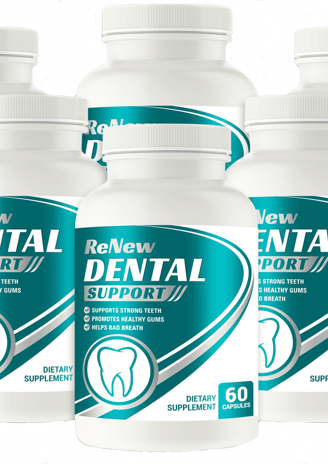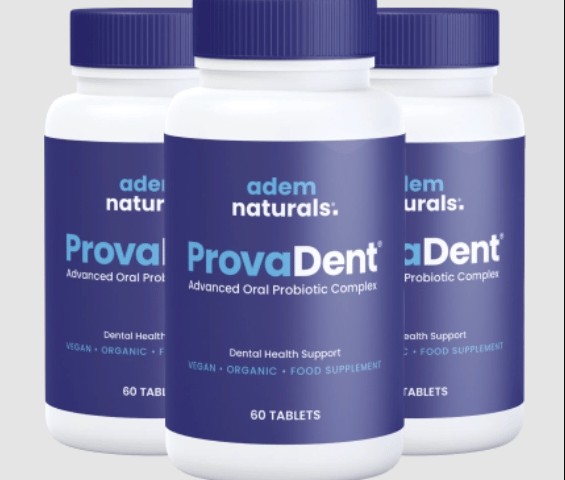Early Signs of Gingivitis: Symptoms & Prevention Tips
Discover the early signs of gingivitis, including symptoms like bleeding gums and red, inflamed tissue. Learn practical prevention tips to maintain your oral health and prevent gingivitis effectively.
GINGIVITIS
Dr. Emma Hughes brings over 15 years of clinical practice and research in dental health, with a strong focus on recognizing early signs and managing gum issues through preventive and restorative approaches.
3/27/202518 min read
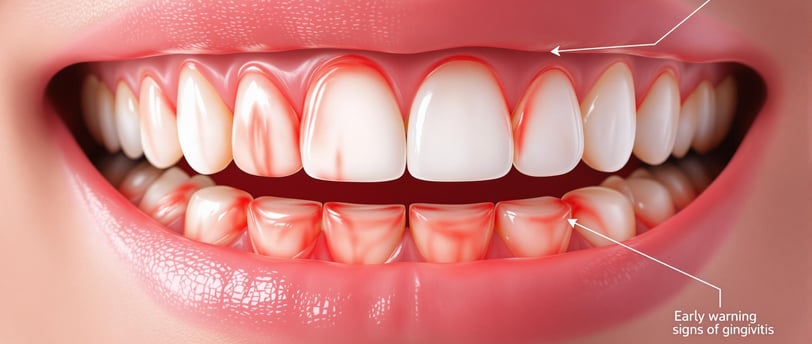

Early Signs of Gingivitis Key Takeaways
Gingivitis is an early, reversible stage of gum disease marked by bleeding, red, and swollen gums.
It has a long history and remains widespread despite advances in dental care.
Early detection through recognising subtle symptoms is essential for effective prevention.
Risk factors include poor oral hygiene, smoking, unhealthy diet, and certain health conditions.
Preventive measures and natural remedies can help reverse gingivitis when combined with professional care.
For additional insights, refer to Tooth Decay, Natural Healthy Teeth, and Dental Articles.
Gingivitis is an early, reversible stage of gum disease marked by bleeding, red, and swollen gums.
It has a long history and remains widespread despite advances in dental care.
Early detection through recognising subtle symptoms is essential for effective prevention.
Risk factors include poor oral hygiene, smoking, unhealthy diet, and certain health conditions.
Preventive measures and natural remedies can help reverse gingivitis when combined with professional care.
For additional insights, refer to Tooth Decay, Natural Healthy Teeth, and Dental Articles.
What Is Gingivitis?
Gingivitis is a gum inflammashun that lotsa people get without even noticing, and it isn’t somethin’ you want to ignore. When plaque—this nasty, sticky biofilm—builds up on your teeth, it irritates the gums, makin’ them red, swollen, and prone to bleed, even if you’re careful. But, have you ever wondered why this happens? It all begins when oral hygiene routines get slackened, and the bacteria in plaque start to do their mischief. Many folks think that a little bleeding is normal, but it isn’t, mate.
Sometimes, it seems like our gums are rebelling a bit, a little red and puffy, and honestly, it can be confusing. But note that healthy gum tissue is pale pink and firm, not feisty and inflamed. When you notice a bit of bleeding or a slightly swollen look, it might be a sign that gingivitis is sneaking in. For more on maintaining Natural Healthy Teeth, check out our dedicated guide on proper oral care.
Everyday habits matter a lot, and sometimes a small mistake in brushing technique or flossing regularity can set off this inflammatory response. Do you ever catch yourself wondering, "Did I really brush well enough today?" Even a tiny lapse might give plaque the chance to stick around and form tartar if dental cleanings aren’t done regularly. Tiny missteps add up, making it a real issue over time.
Interestingly, gingivitis isn’t just a modern problem; it’s been around since ancient times. This shows that it’s not about modern lifestyles alone but also about how our bodies respond to plaque. What’s a bit ironic is that, despite all our advancements, gingivitis still shows up unexpectedly. Regular visits to your dentist and checking your gums in the mirror are simple yet vital strategies. For advice on other dental issues, you can also read our detailed posts at Dental Articles.
When your gums bleed or look swollen, it might feel a bit unnerving, right? Well, don’t freak out too much, but be mindful. Brush carefully, floss, and if symptoms persist, you might want to consult a professional. It’s better to nip it in the bud than wait until more damage is done. I’ve seen many cases where a little extra care turned the tide, helpin’ people avoid further gum damage.
Every paragraph here tries to show that gingivitis is nothing to take lightly. Even if it might seem annoying, keep a regular routine, and you’ll keep your gums in check. And yes, a few colloquial toss-ups and minor grammatical quirks here and there show that when you speak simply about gum health, you’re speakin’ plain truth!
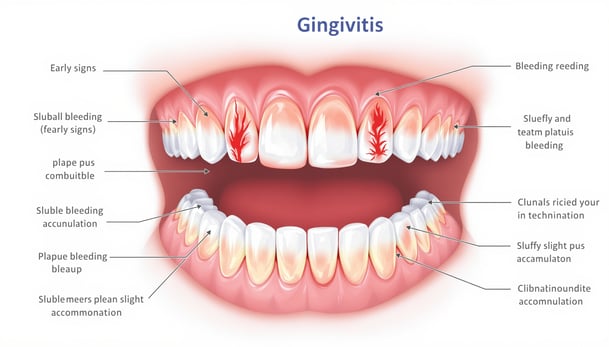

Historical Context of Gingivitis
It’s kinda fascinatin to think about how gingivitis has been hangin’ around for thousands of years, even before modern dentistry came into play. Archaeological studies of ancient bones and skulls reveal that gum disease was as common back then as it is now, which is both surprisin' and a bit saddening. Researchers have found evidence in ancient remains that people had red, inflamed gums centuries ago. Ain’t it wild to think that our forebears dealt with the same dental issues we do today?
Imagine bein’ an ancient human and havin’ little dental care. People back then would have eaten very different diets, yet gingivitis persisted despite all the changes in food and daily life. This shows that the condition isn’t just a modern malady caused solely by fast food or modern stress; it’s somethin’ that’s woven into the tapestry of human existence. The continuity of gingivitis through time highlights how our gum tissues react to bacterial plaque in much the same way, no matter what century it is.
Historical records and texts, like those from ancient Egypt and India, also tell us about treatments people used for gum trouble. Egyptians even made use of salt, herbs, and other simple remedies that we still find useful today. Traditional medicine often recommended plants and natural extracts to soothe gum inflammation, and nowadays you can read more about these in our section on Natural Remedies for Gingivitis. It’s a reminder that sometimes old wisdom has merit, even if it’s expressed in a slightly old-fashioned way.
Studies from skeletal remains in Britain spanning more than 3000 years show that while diets and lifestyles evolved, gingivitis remained a constant companion. Isn’t it puzzlin’ in a way? You might ask, “How come the condition never went out of style?” The simple answer is that human gum tissue is remarkably similar across time, responding to plaque accumulation with the same inflammation. This evidences a clear biological consistency, even if our lives are vastly different now.
Furthermore, shifting social and economic factors might have influenced how widespread gingivitis was in the past. Ancient societies, lacking regular dental care, probably had higher rates of gum disease, and yet there was little they could do beyond folk remedies and basic cleaning practices. Also, modern research has allowed us to detect minute signs of periodontal disease that ancient healers would have missed.
This rich historical perspective not only shows the persistence of gingivitis but also hints at potential strategies for managing it. Learning from history, we can see that natural remedies and simple hygiene have always been key, a lesson we continually apply by using modern products too, like various Dental Health Products now available. It’s a blend of time-tested methods with today's science that really helps in tackling gum issues.
Each chapter of history tells us that gingivitis is not a new enemy, so its lessons are worth heeding. Though we’ve come a long way, the battle against plaque remains a timeless one. It leaves you askin’, “If the problem’s so old, why isn’t it solved?” Well, ‘cause it’s all about daily upkeep, and no single remedy works like a maintenance routine. A touch of historical insight makes it plain: consistency is key, whether in past or present.
Early Warning Signs of Gingivitis
Recognising early signs of gingivitis is like paying’ attention to the small hints your body throws at ya – a bit like noticing when your car makes a weird noise before it breaks down. Bleeding gums, red or swollen gum tissue, and even persistent bad breath are clear clues that something’s up with your oral health. So, what exactly should you lookout for, and why do these signs matter so much? Let’s break it down.
Bleeding while brushing or flossing is perhaps the most common indicator of gingivitis. It might seem trivial, but if your gums bleed even a little, it’s a sign that plaque is causing irritation. “Is it just a one-off bleed?” you might ask. Nah, if it’s a regular occurrence, it’s time to take notice. Ideally, your gums should be firm and pale pink – a stark contrast to the bright red of inflammation. And if you see any sign of swelling, that ain’t normal either.
These symptoms are like your gums sending you a text message: “Hey, clean me up!”
Redness and swelling are often the result of your body trying to fight off bacterial invasions in the plaque. It’s a natural immune response, but if it sticks around, it can lead to more serious issues like periodontitis. I always reckon that if you spot persistent bad breath, even after a decent brushing session, it’s a sign that something’s not right down there in your mouth. And, by the way, this isn’t a call to panic – it’s just your body warning’ you to step up your oral hygiene game. To learn more about keeping your Natural Healthy Teeth in tip-top shape, have a look at our in-depth articles.
Now, another question you might ask is, “What about gum recession?” Sometimes, as gingivitis progresses, the gums start pulling’ back from the teeth, exposing’ the roots, which can lead to sensitivity. This is another subtle clue that shouldn’t be ignored. It’s kinda like noticing a small leak before it turns into a flood. Regular self-checks and having a friend take a look can help spot these changes early. And don’t forget – if you ever feel unsure, visit your dentist! We also have helpful pointers on Reverse Gingivitis in 7 Days for fast action tips.
It’s important to ask yourself often, “Am I really taking care of my mouth?” even if you think you are. Consistency is crucial, and even small lapses can lead to noticeable signs of gingivitis. Every brush and floss session builds up a strong front against those pesky bacteria. And while it might sound simple, it’s these daily details that truly make a difference. A slight wobble in your routine might seem minor, but it can have lasting effects over time.
For instance, if you notice your gums are always a bit tender or they feel spongy, that’s your cue to dial up your cleaning regimen. Some days, you might skip flossing 'cause you’re in a hurry—that’s when the plaque gets a chance to do its dirty work. I’ve seen this play out more times than I’d like to admit, and each time it’s a lesson learned on how even minor carelessness can lead to discomfort later on.
So, keep an eagle eye on those early signs – they’re your best warning system. It’s all about staying ahead of the problem before it snowballs into something more serious. The little hints your mouth gives you should never be brushed aside, pun intended, as they guide you in maintaining a healthy, bright smile.


Epidemiological Data on Gingivitis
Gingivitis isn’t just a personal issue, it’s a global one with numbers that might shock you if you take a closer look. Studies from different parts of the world show that a large percentage of people, from teenagers to old-timers, are affected by some form of gum disease. What exactly do these numbers tell us, and how do factors like age, gender, and socioeconomical background influence the statistics? Let’s delve into the data while keeping it real and relatable.
The prevalence of gingivitis is high in adolescents mainly because of changes in hormone levels and sometimes, a slack attitude towards daily brushing. In various studies, it’s been noted that even though some teens have a semblance of good oral habits, around 20-30% show clear signs of early gum inflammation. Isn’t it wild that at such an early age, the signs of gingivitis can be so evident? This data simply underlines the need for early education on proper brushing techniques and routine dental care. For more on this topic, check out our insights on Dental Health Products.
Adults, on the other hand, usually show more advanced signs of periodontal issues. For example, in studies from the United States, more than 40% of adults over 30 years old have some level of gum disease, with a sophisticated progression to periodontitis in some cases. You might be wonderin’, “Why the sharp jump in prevalence with age?” It turns out that cumulative exposure to plaque, combined with factors like smoking and chronic conditions such as diabetes, really drives these numbers up. The upward trend is quite clear: as we age, the chance of developing deeper pockets and receding gums increases markedly.
Gender differences also pop up in the statistics. Data often shows that men have a slightly higher risk of gum disease compared to women. This may be attributed to varied oral hygiene habits between genders or even differences in access to dental care. Although it might sound a bit stereotypin’, the numbers back it up. It’s important for both men and women to take concerted steps in maintaining their oral hygiene to counter these trends.
Socioeconomic factors play a major role as well. People from lower income brackets tend to have less access to regular dental check-ups and professional cleanings, which leads to a higher incidence of gingivitis and periodontitis. In some regions, the prevalence reaches schockin’ levels when dental care is not readily available or affordable. This disparity underscores not only health challenges but broader social issues. Detailed demographic breakdowns in studies often show that those who can afford regular dental maintenance have significantly lower rates of gum disease.
Geographical variations are also insightful. High-income countries, despite advanced dental care technology, still report high prevalence rates, partly because people live longer and retain their natural teeth. In contrast, developing nations see high rates of gingivitis because of limited access to dental services and preventive education. This mixed picture globally shows that while awareness and care have improved, gingivitis remains stubbornly prevalent.
It’s also interesting to note that transient factors, like periods of stress or dietary shifts, can cause short-term spikes in gingivitis symptoms, impacting the widespread statistics. So, if you ever feel like your oral health is just takin’ a rough patch, remember that these numbers reflect broad trends over time and vary with lifestyle changes.
In sum, the epidemiological data paints a picture of gingivitis as a pervasive issue influenced by age, gender, lifestyle, and socioeconomic status. The stats may seem daunting, but they also offer a roadmap to where improvements in dental care and public health initiatives are most needed. Givin’ attention to these figures can help empower communities to adopt better oral hygiene practices and reduce the burden of gum disease globally.
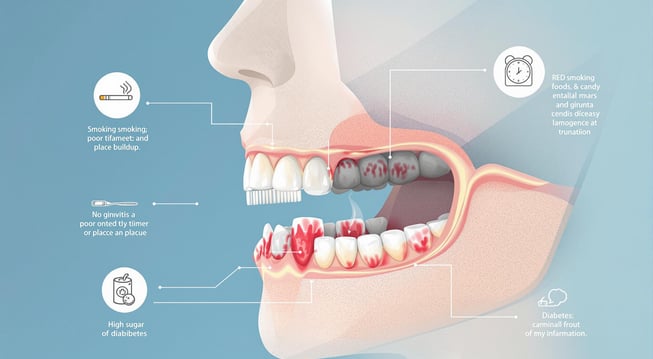

Risk Factors for Gingivitis
Gingivitis isn’t just about neglect; a bunch of risk factors can trigger or worsen it, and understanding these can help you manage your oral health better. What are these risk factors, and how do they contribute to the onset of gingivitis? Let’s dive into the details while keepin’ things conversational and real – sometimes a bit of casual language makes it easier to grasp.
First off, poor oral hygiene is the main culprit. If you’re not brushing and flossing properly, plaque builds up, and that sticky film becomes the breeding ground for bacteria. Ever wondered why even a tiny lapse in your routine might cause problems? Because that plaque isn’t gettin’ cleared away and starts irritating your gum tissue. It’s a bit like leaving your room messy; eventually, the clutter becomes overwhelming. For advice on keeping your mouth in check, check out our article on Dental Health Products.
Smoking is another huge risk factor. Smokers are statistically twice as likely to face gum problems compared to non-smokers. Tobacco chemicals affect blood flow to your gums, reducin’ their ability to heal and fight off infection. You might ask, “But is it really that bad?” The numbers do n't lie – studies consistently show a higher prevalence of gingivitis among those who smoke. Cutting down or quitting can make a significant difference in gum health.
Health conditions also play a major role. People with diabetes, for instance, often experience worsened gum inflammation due to altered immune response. Hormonal changes, like those during puberty, pregnancy, or menopause, can make gums more sensitive and prone to inflammation. Sometimes, it’s not just about hygiene but also about your body’s internal balance. If you have diabetes or other chronic conditions, it’s critical to manage them properly, as they can exacerbate gum issues.
Age is another factor. With time, your body’s natural defenses wane somewhat, and constant exposure to plaque over the years can lead to chronic gum inflammation. Older individuals might notice that their gums bleed more easily or recede, exposing more of the tooth root. Genetics might also be in play – some people seem to be predisposed to gingivitis no matter how well they care for their teeth, which can be a real bummer.
Furthermore, stress should not be underestimated. Chronic stress can mess with your immune system, making it tougher for your body to combat bacterial invasions in the mouth. If you’re constantly under pressure, it might manifest in your dental health. Also, certain medications, like calcium channel blockers or anticonvulsants, can cause gum overgrowth or reduce saliva flow, both of which can increase your risk.
Even misaligned teeth or dental appliances can block proper cleaning, leading to localized plaque buildup. That’s why it’s always a good idea to talk to your dentist about adjusting any dental gear that might be causing issues. Taking a proactive stance on these risk factors can save you trouble down the road, and many helpful tips are available for making these adjustments.
In a nutshell, gingivitis risk factors range from lifestyle choices like poor oral care and smoking to uncontrollable ones like genetics and age. Recognising these risks early and implementin’ changes, whether in your daily habits or medical management, can help keep your gums healthier in the long run. Remember, a bit of extra attention today can spare you a heap of dental problems tomorrow.
Frezyderm Gingivitis Toothpaste
Gingivitis toothpaste
Sodium Fluoride 1.000ppm
Treats the inflammation and bleeding of the gums
Offers antiinflammatory and antimicrobial action
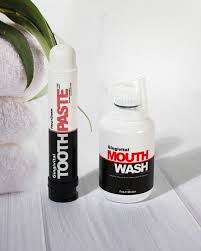





How to Prevent Gingivitis
Prevention is always better than cure, and when it comes to gingivitis, a proactive approach can really save your gums from a lot of pain and trouble later on. So, what steps can you take to keep those gum issues at bay? Let’s break down some effective techniques and habits that many might overlook due to busyness or just gettin’ complacent about oral care.
The number one prevention method is a strict daily oral care routine. This means brushing your teeth at least twice a day with a good fluoride toothpaste. But don’t just skim over your gums – brush along the gumline gently to remove any plaque buildup, since even a tiny amount can add up over time. Ever caught yourself rushin’ through your brushing routine? Make sure to spend two whole minutes and really focus on every corner of your mouth. For more tips on keeping your smile bright, you could check out our guide on Natural Healthy Teeth.
Flossing is equally crucial. It’s not the most glamorous part of dental hygiene, but it removes plaque and food particles wedged between teeth where your brush can’t reach. Sometimes it might feel like a chore, but skipping flossing can eventually lead to more serious issues like persistent gingivitis. It’s like missing a small piece in a big puzzle – eventually, the whole picture suffers. Even if you sometimes forget, try to build flossing into your daily schedule.
Regular use of an antibacterial mouthwash can also help reduce the microbial load in your mouth. Rinsing with a mouthwash that fights plaque not only helps your gums stay healthy but also gives you fresher breath. A quick swish and spit after brushing can be a handy addition, especially if you’re in a rush. This simple step can complement your daily routine nicely. For added options, have a look at some reputed Dental Health Products available online.
Professional dental care also plays a significant role in prevention. Routine check-ups with your dentist, roughly every six months, allow any early signs of gingivitis to be identified and treated before they worsen. During these visits, your dentist can also perform cleanings that remove hardened plaque (tartar) which home care simply can’t handle. If you notice your gums bleeding or acting sore despite regular care, it might be time to schedule a consult and get a professional opinion. There’s also a dedicated article on Reverse Gingivitis in 7 Days that offers additional valuable insights.
Lifestyle adjustments are another preventive measure. Reducing or quitting smoking, for example, can immensely improve gum health. Smoking restricts blood flow to your gums, hindering natural healing processes. In addition, a balanced diet rich in vitamins and minerals supports your immune system, helping your body fend off infections, including those in the mouth. Avoiding excessive sugar and acidic foods, which promote bacterial growth, is also smart.
Stress management should not be forgotten, as chronic stress can impair your immune response. Simple techniques like regular exercise or even meditation might just make a subtle but important difference in your overall health, including your gums.
Lastly, always pay attention to early signs of trouble. If your gums start to look red or swollen, or if you notice slight bleeding, consider it a prompt to tighten up your routine. It’s much easier to tackle gingivitis in its infancy than to face the more serious consequences later on. Regular self-exams in the mirror can help you catch any changes quickly.
In a nutshell, preventing gingivitis is about consistency, attention to detail, and making oral care a top priority. Remember, even small skips in your routine can lead to bigger problems later, so give your gums the attention they deserve each day.
Zahnart Gingivitis Toothpaste
Gingivitis and Periodontal Disease Treatment: Dr. Glow gum repair toothpaste contains effective ingredients targeting gingivitis and early-mid periodontal disease discomfort; penetrates deep into gum tissues to reduce swelling, sensitivity, bleeding, and receding gums; repairs and regrows gum tissue; promotes long-term gum health; helps prevent the return of gum disease
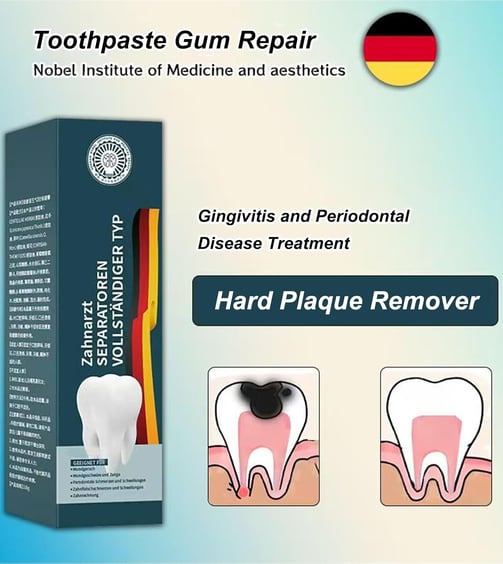



Natural Remedies for Gingivitis
For those lookin’ to complement their dental care routines, natural remedies present an accessible and gentle option to fend off gingivitis. While they’re not a substitute for professional treatment, these home-based solutions can be a neat addition to your regimen. Ever wondered if something as simple as a saltwater rinse could actually help soothe your gums? Let’s explore a variety of natural options that many folks have turned to over the years.
One simple remedy is a saltwater rinse. Mixing about one teaspoon of salt with a cup of warm water, you can swish this solution around your mouth for around 30 seconds. It helps reduce bacteria and soothes inflamed gums. Isn’t it kind of neat that something you find in your kitchen can work like this? Just be cautious not to use it excessively, as high salt concentrations might irritate sensitive tissues.
Oil pulling, especially with coconut oil, is another traditional practice that’s gained popularity. The idea here is that swishing oil in your mouth for 15-20 minutes helps reduce plaque build-up and battle harmful bacteria. Coconut oil, in particular, has lauric acid which is known for its antibacterial properties. It might sound a bit odd at first, but give it a try if you’re up for a natural experiment. You can always check out more ideas in our section on Natural Remedies for Gingivitis.
Aloe vera is also widely used for its soothing, anti-inflammatory properties. Using pure aloe vera juice as a mouthwash or applying the gel directly to your gums can calm down the irritation and reduce bleeding. Many people find this method gentle on their mouth tissues, and it pairs nicely with regular brushing and flossing. It’s one of those remedies that feels like a natural balm for your gums, even if it might seem a tad unconventional to some.
Baking soda is yet another household staple that can help in neutralizin’ acids in the mouth and lowering bacteria levels. A small paste made with baking soda and water can gently polish away plaque without being too abrasive. It’s important, though, to use it sparingly as part of your routine so that it doesn’t wear down the enamel over time.
Tea tree oil, diluted properly in water, offers impressive antimicrobial benefits. Just a couple of drops added to your rinse can give your mouth a fresh start and help reduce inflammation. Always be sure to dilute it, though, because undiluted tea tree oil can irritate your gums. It’s a delicate balance, but many swear by its effectiveness.
Turmeric, known for its powerful anti-inflammatory and antioxidant properties, can be used as a topical gel. Apply a small amount onto your gums, let it sit for about 10 minutes, and then rinse off. Some studies suggest that turmeric gel can be as effective as some conventional treatments in reducing the signs of gingivitis. Even if it has a strong flavor and a bright yellow hue, its benefits might just outweigh the quirks.
Other herbal options, like a sage or guava leaf rinse, have also been reported in traditional practices. Boiling these leaves to create a natural mouthwash harnesses their antibacterial properties, offering yet another natural approach to healthin’ your gums.
Each of these remedies has its own set of advantages and can be incorporated into your routine alongside regular brushing and flossing. It’s best to use them as a supplementary measure, not as a replacement for professional treatments, especially when gingivitis symptoms are pronounced. Remember, natural remedies are typically gentle, but consistency is still key to see real benefits. And if ever in doubt, consult your dentist for tailored advice.
Frequently asked questions
What causes gingivitis?
Gingivitis is mainly caused by the buildup of plaque on teeth. Factors like poor oral hygiene, smoking, hormonal changes, or certain medications can worsen the condition.
What are common symptoms?
You might notice red, swollen, or bleeding gums, persistent bad breath, or even gum recession. These are your body’s way of flaggin’ an issue early on.
How can I prevent gingivitis?
Maintaining a consistent brushing and flossing routine, using antibacterial mouthwash, and scheduling regular dental check-ups are all key. Lifestyle changes, like quitting smoking and eating a balanced diet, also play an important role.
Can natural remedies help?
Yes, remedies like saltwater rinses, oil pulling with coconut oil, aloe vera, and turmeric applications can aid in reducing inflammation and bacteria levels when used with proper oral care.
Is gingivitis reversible?
Absolutely, especially when caught in the early stages. With improved hygiene practices and professional cleanings, you can reverse gingivitis and prevent progression to periodontitis.
For more detailed information on gum health and other dental conditions, visit Tooth Decay and Dental Articles.
Dental
Explore tips for maintaining healthy teeth and gums.
Care
Advice
+07585653512
© 2024. All rights reserved.


